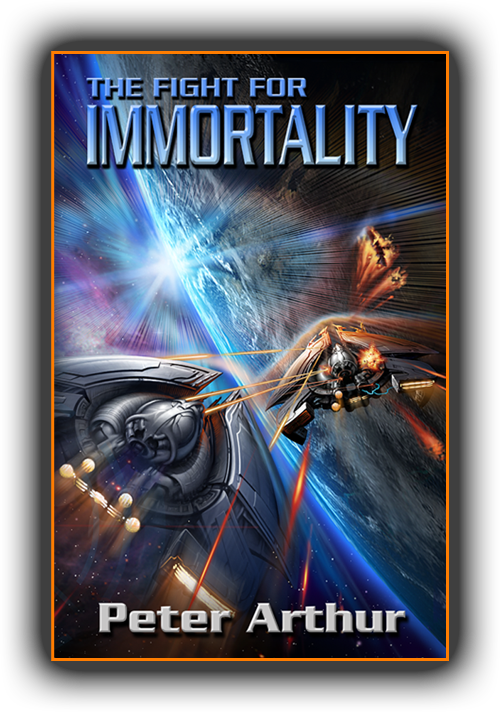
About Peter Arthur
Peter Arthur was born in Australia where he lived until the age of 17. At that time his family came to the United States. He spent his last year of high school at Granite High in Salt Lake City. He did not go to college. Over the ensuing years he worked in many areas of the country. He spent some time as a workers comp fraud investigator (wasn’t any good at tailing cars) and finally as a salesman.
In 1988 Peter had a vivid dream. This dream became the basis for the interstellar culture called the “Directory of Stars and Planets” or more simply the Directory. His first book entitled “The Fight for Immortality” introduces this culture.
ABOUT WRITING:
At age 15 in his Australian high school English class he was given a month long writing assignment. It could include any form – essay, poetry etc. He left working on the assignment right to the last minute. On the night before the paper was due, he wrote two poems. Then (in desperation) he awoke (without an alarm) at 4am and wrote two more. The teacher gave him the highest grade he ever received in school for the four poems. But she gave him this grade for making an excellent selection of poetry and asked “who wrote them?” The teacher would not accept that he was the author.
Many kids have had similar experiences in school. This experience did not prevent Arthur from writing – in fact he had no real ambition early in life to write anything.
In 1988 he had a vivid dream that formed the basis of the interstellar culture described in “The Fight for Immortality.” Soon after the dream he began writing the manuscript. But many years would pass before he made a serious effort to complete and publish the novel. In “88 after deciding to write a novel, Arthur felt the best way to educate himself about writing was though reading classic literature. He wanted to see the writing of great authors. Books that had stood the test of time. And to learn from these authors if he could. In the early years he had read mostly SciFi and hand me down Alistair MacLean books from his father, such as “The Way to a Dusty Death” and “Ice Station Zebra.” Later came Zelazny and “Nine Princes in Amber.” Wow! Frank Herbet and “Dune.” Amazing. Orson Scott Card and “Enders Game.” Jack Vance and “Truillon.”
Comparing classic literature to SciFi he found the writing quality to be better in the classics but the story’s the science fiction writers told!! No comparison there!
Developing any skill as a writer was work. He increased his writing ability by writing – at the time TFFI was published he had written well over half a million words. Many times he penned something which at the time he wrote it considered it well done. Only to read the same material some days or weeks later and be shocked at how bad it was. Arthur mentions one “native” skill. It seems that even when the initial writing was bad – he had the ability to make it better and to know that it was improved. He laughs, “not that it became good – I just knew it was better than before!” Certain sections of his first book were rewritten numerous times. Of an early manuscript his brother once said, “good story, bad writing.” And it was true at the time. Not until he saw one of his editors smile while reading his manuscript….
He enjoys the process of writing. In SciFi especially many of the freedoms and restrictions are what the author creates. There is a joy to working out a tightly woven story. Arthur once related, “when I first started writing suspense sequence it would last only a sentence or two at most. I experienced nausea when I wrote suspense and it made me highly uncomfortable to write it. Once I realized that I had a negative reaction, I made it my mission to write suspense until I could do it comfortably.”
Asked what he liked about writing, he responded, “Writing the good stuff: the unexpected, something you know will make people laugh, the thing no one could ever imagine but is plausible. I like big goals and the overcoming of huge obstacles; I like the bad guy or gal getting it in the teeth. I like to counter dishonesty with honesty. I like the romance. Also, I really like creating diverse characters and looking at the story of their lives from THEIR point of view. When I assume their personality and their outlook on life this suggests entirely new and different responses and this makes the story far more interesting to write.”
Peter Arthur tells of a time when he and his family lived near the beach in Melbourne Australia. His sister was ten years younger (and still is!!). When she was five he would take her to the beach and play in the sand and small waves. Walking home he would place her on his shoulders and tell her stories. He would begin by saying, “You know the story of Goldilocks and the three bears don’t you?” And she would say yes. “Well the story you have heard is not the real story.” And proceeded to add his own flights of fancy to the fairy tales. Many years later she reminded him of these walks and said it was a happy time in her life.
